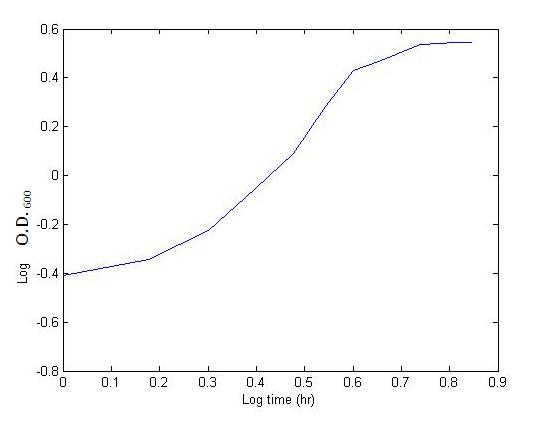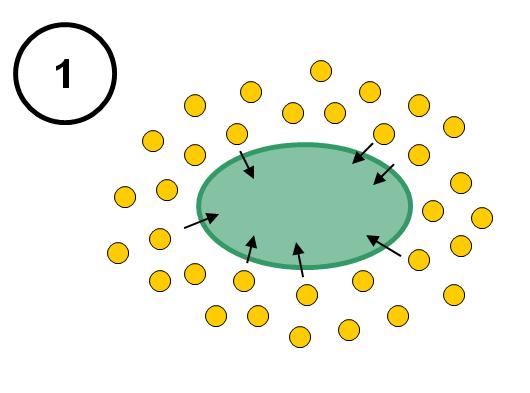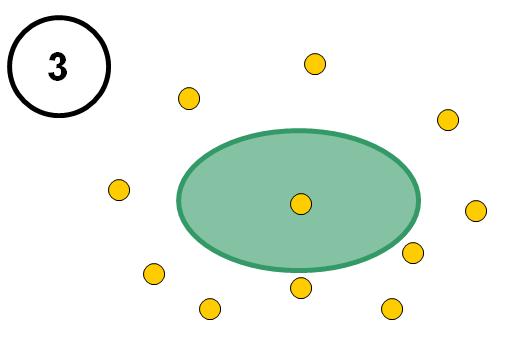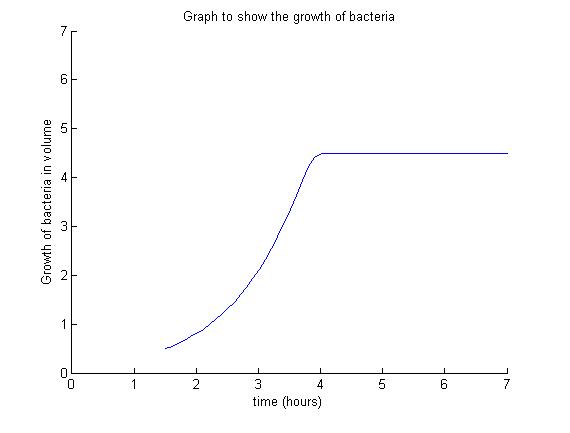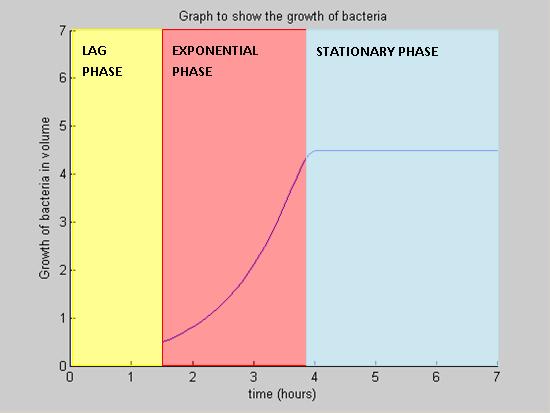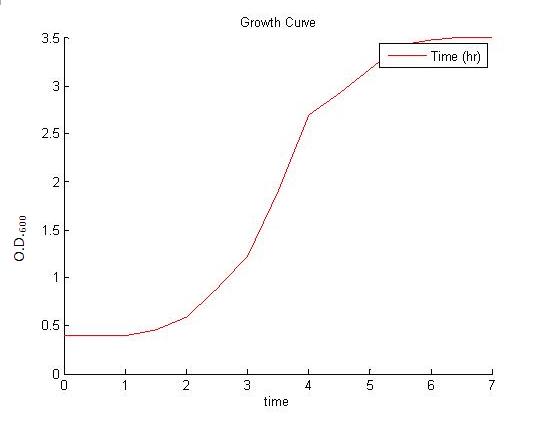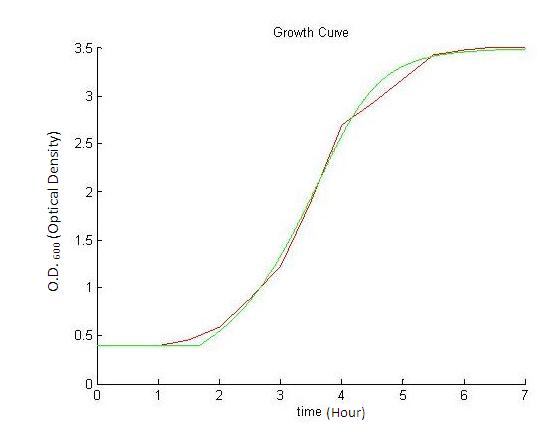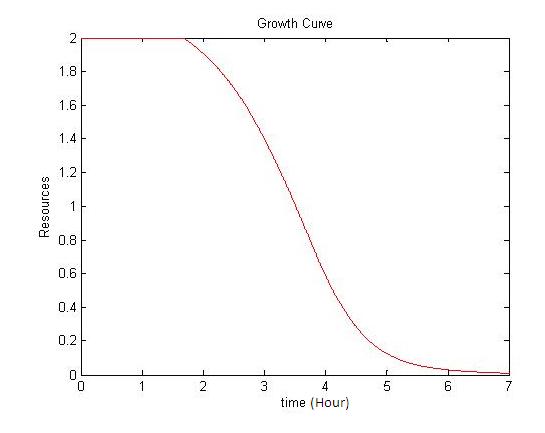Team:Imperial College/Growth Curve
From 2008.igem.org
Prudencewong (Talk | contribs) |
|||
| Line 46: | Line 46: | ||
</td><td><center>Resource Curve</center> | </td><td><center>Resource Curve</center> | ||
</td></tr></table></html> | </td></tr></table></html> | ||
| - | + | <br><br> | |
The following constants used to generate the model were found to yield the best fit to experimental results. | The following constants used to generate the model were found to yield the best fit to experimental results. | ||
| Line 58: | Line 58: | ||
INITIAL OD: 0.4 | INITIAL OD: 0.4 | ||
| - | CONSTANT ( | + | CONSTANT (α): 0.64516 |
The model 'fit' is very good in exponential and stationary phases. However, this does not apply to the lag phase. This suggests that the model should be expanded in order to take into account phenomena such as the movement of the nutrients into the cells. | The model 'fit' is very good in exponential and stationary phases. However, this does not apply to the lag phase. This suggests that the model should be expanded in order to take into account phenomena such as the movement of the nutrients into the cells. | ||
Revision as of 19:58, 28 October 2008
Modelling the Growth Curve
|
|||||||||||||||||||||
 "
"

